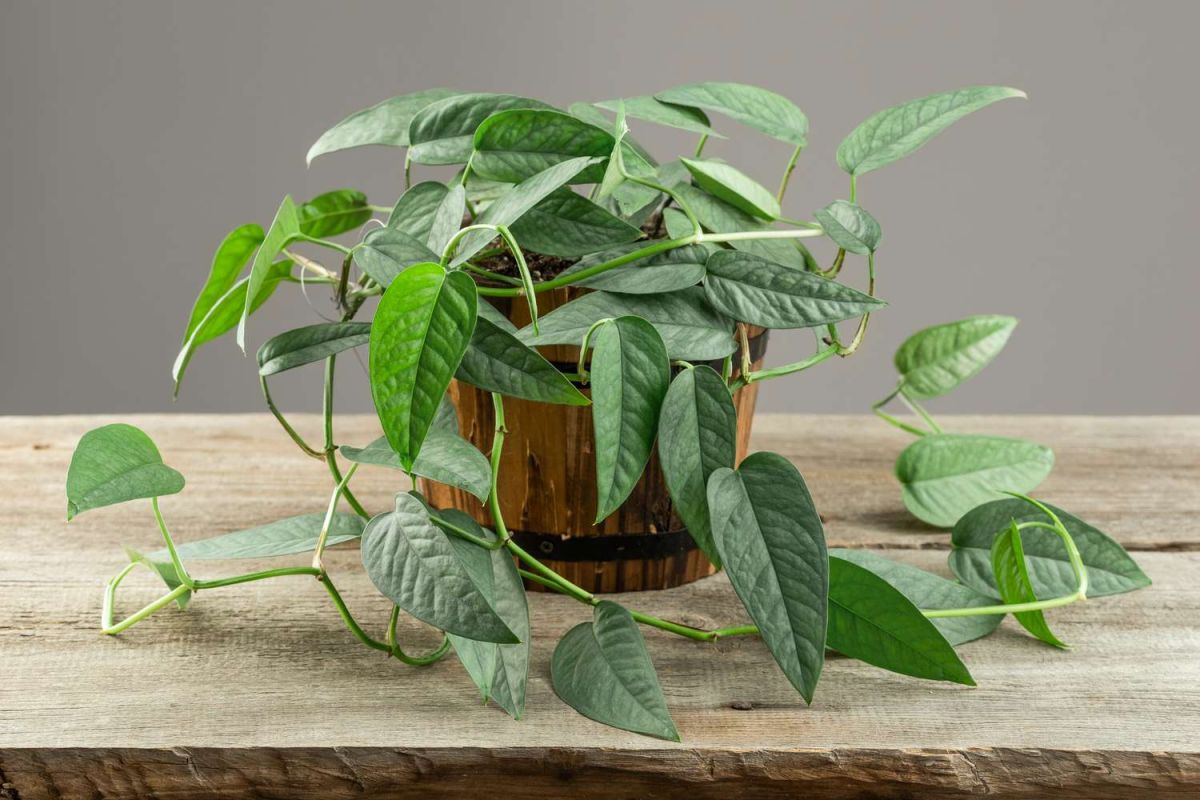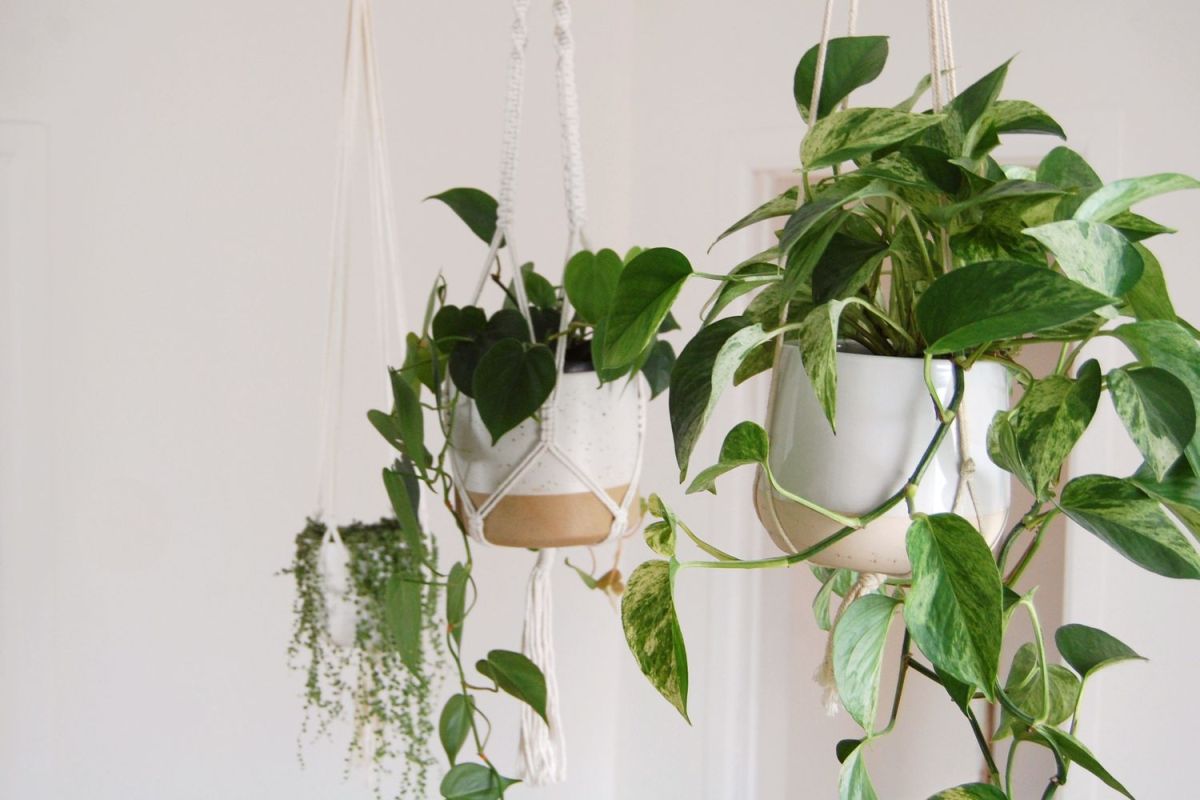Greening Up Your Space: The Charm Of Houseplant Vines

House Plants Vine: A Guide to Growing and Caring for Lush Indoor Greenery
What do you mean by House Plants Vine?
House plants vine refers to a variety of plants that possess long, trailing stems or tendrils, which allow them to climb or cascade gracefully. These plants are highly sought after by indoor gardening enthusiasts as they add a touch of natural beauty and elegance to any living space. From the classic English Ivy to the trendy String of Pearls, house plants vine offer a wide range of options to suit different preferences and care needs.
How to Care for House Plants Vine?
To ensure the health and vitality of your house plants vine, it is crucial to provide them with the right growing conditions and care. Here are some essential tips:

1. Light: Most house plants vine thrive in bright, indirect light. Place them near a north or east-facing window where they receive filtered sunlight. Avoid exposing them to direct afternoon sun, as it can scorch their delicate leaves.
2. Watering: The watering needs of house plants vine vary depending on the species, pot size, and environmental conditions. Generally, it is recommended to water them thoroughly when the top inch of soil feels dry. Be careful not to overwater, as this can lead to root rot. Always use well-draining soil and pots with drainage holes.
3. Humidity: House plants vine often prefer higher humidity levels. You can increase humidity by placing a tray filled with water near the plants or using a humidifier. Misting the foliage occasionally also helps to maintain adequate moisture.
4. Temperature: Most house plants vine thrive in average room temperatures between 60-75°F (15-24°C). Avoid exposing them to extreme temperature fluctuations or drafts, as they can cause stress and damage to the plants.
5. Fertilization: Feed your house plants vine with a balanced, water-soluble fertilizer during the growing season (spring and summer). Follow the instructions on the fertilizer package for the correct dosage and frequency.
6. Pruning: Regular pruning helps to maintain the shape and promote bushier growth in your house plants vine. Trim back any leggy or overgrown stems to encourage new growth. You can also propagate new plants from the cuttings.
What is known about House Plants Vine?
House plants vine have been popular indoor plants for centuries due to their ability to adapt to a variety of environments and their aesthetic appeal. They are known for their lush foliage, which often features unique colors, shapes, and patterns. House plants vine are not only visually appealing but also offer numerous benefits for indoor spaces.
The presence of house plants vine can improve indoor air quality by removing toxins and releasing oxygen. They can also help to increase humidity levels, reducing the risk of respiratory issues and dry skin. Furthermore, these plants have been shown to boost mood, reduce stress, and improve overall well-being.
House plants vine are versatile in their uses and can be grown in various settings, including hanging baskets, trellises, or as trailing accents on shelves and furniture. Their adaptability makes them suitable for homes, offices, and even low-light areas where other plants may struggle to thrive.
Solution for Growing House Plants Vine Successfully
Growing house plants vine successfully requires attention to detail and a little patience. Here are a few solutions to common challenges:
1. Lack of sunlight: If your space lacks sufficient natural light, you can supplement it with artificial grow lights. LED lights designed for plants can provide the necessary spectrum for healthy growth, even in low-light conditions.
2. Pests: House plants vine can sometimes attract pests such as aphids, spider mites, or mealybugs. Regularly inspect your plants for signs of infestation and treat them with organic insecticidal soap or neem oil to eliminate the pests.
3. Overwatering: Overwatering is a common issue that can lead to root rot and the eventual death of the plant. Ensure you are using well-draining soil and pots with drainage holes. Always check the soil moisture before watering and adjust the frequency accordingly.
4. Supporting climbing plants: Some house plants vine, like the Monstera or Pothos, benefit from a support structure as they grow taller. Use stakes, trellises, or moss poles to provide stability and guide their growth.
Information about Popular House Plants Vine Varieties
1. English Ivy (Hedera helix): English Ivy is a classic house plants vine known for its glossy, dark green leaves. It can be grown as a trailing plant or trained to climb walls or trellises. English Ivy prefers moderate to bright indirect light and slightly cooler temperatures.
2. String of Pearls (Senecio rowleyanus): String of Pearls is a trendy house plants vine that features cascading strands of spherical, bead-like leaves. It requires bright indirect light and well-draining soil. String of Pearls is an excellent choice for hanging baskets or elevated shelves.
3. Pothos (Epipremnum aureum): Pothos, also known as Devil’s Ivy, is a popular choice for beginners. Its heart-shaped leaves come in various shades of green and variegation. Pothos can tolerate low light conditions but thrives in bright, indirect light. It is known for its air-purifying qualities.
4. Philodendron (Philodendron spp.): Philodendrons are versatile house plants vine with a wide range of species and cultivars. They feature large, glossy leaves and are available in various shapes and colors. Philodendrons prefer bright, indirect light and moderate watering.
5. Hoya (Hoya spp.): Hoyas, also known as Wax Plants, are beloved for their waxy, sometimes fragrant, flowers and thick, succulent-like leaves. They prefer bright, indirect light and well-draining soil. Hoya is an excellent choice for those seeking unique and visually striking house plants vine.
Conclusion
House plants vine have become increasingly popular as people recognize their ability to enhance indoor spaces with their lush foliage and air-purifying qualities. By providing adequate light, water, and care, you can enjoy the beauty and benefits of various house plants vine varieties. Whether you opt for the classic English Ivy or the trendy String of Pearls, adding these green companions to your home or office will surely bring a touch of nature’s charm.
Frequently Asked Questions (FAQs)
1. Can I grow house plants vine in low light conditions?
Yes, there are several house plants vine varieties that can tolerate low light conditions, such as Pothos and Snake Plant. However, keep in mind that these plants may not grow as vigorously or produce as much foliage as they would in brighter light.
2. How often should I fertilize my house plants vine?
House plants vine generally benefit from regular fertilization during the growing season (spring and summer). A balanced, water-soluble fertilizer applied at half the recommended strength every 4-6 weeks should suffice.
3. Can I propagate house plants vine?
Yes, many house plants vine can be easily propagated through stem cuttings. Simply take a healthy stem cutting, remove the lower leaves, and place it in moist potting soil or water until roots form.
4. Are house plants vine safe for pets?
While most house plants vine are non-toxic to pets, it is always best to research specific species before introducing them into a pet-friendly environment. Some plants, such as Philodendron, can cause mild irritation if ingested.
5. How do I prevent my house plants vine from becoming leggy?
To prevent your house plants vine from becoming leggy, ensure they receive sufficient bright, indirect light. Prune back leggy stems regularly and provide support, such as a trellis or stakes, for climbing plants to encourage more compact growth.

I am a beginner writer who continues to learn and consistently creates informative articles to express the ideas that I master.